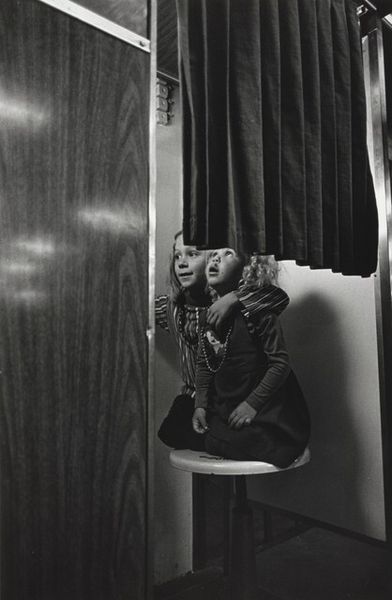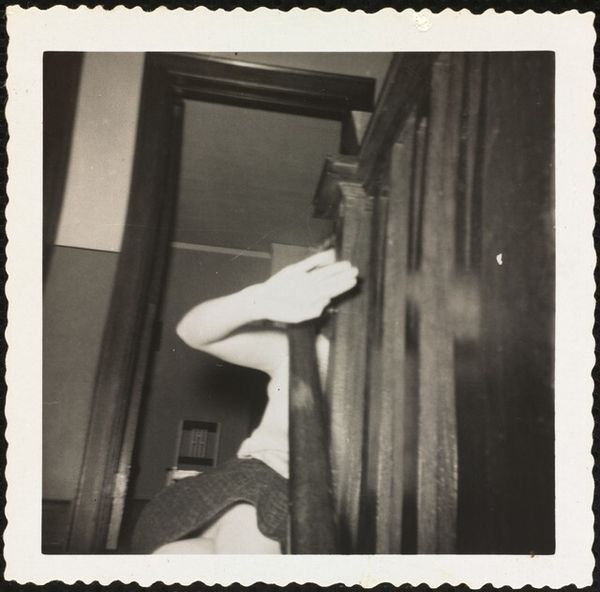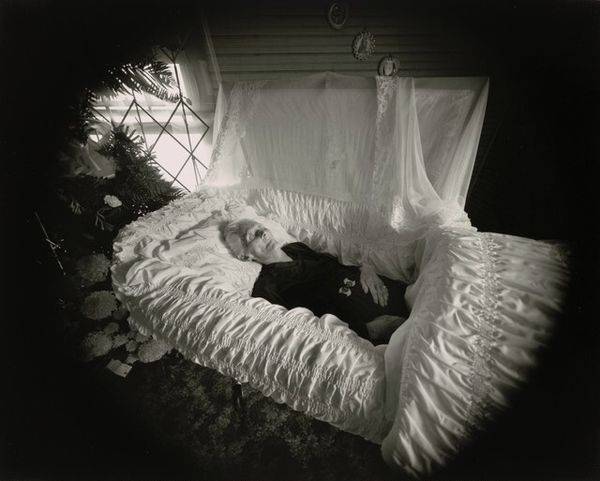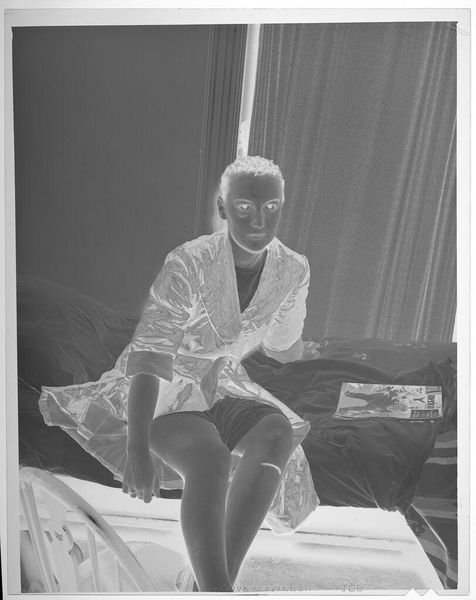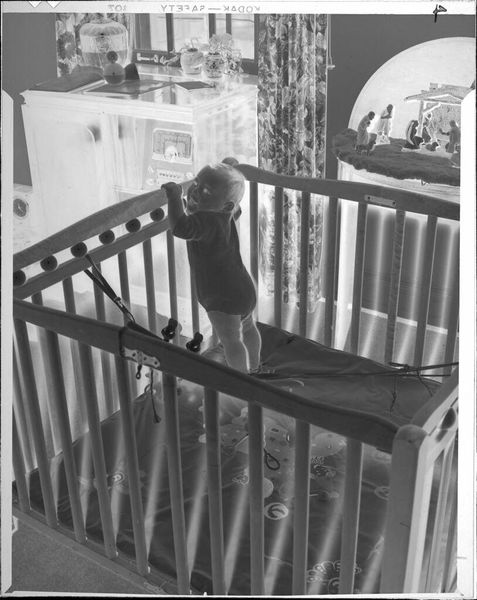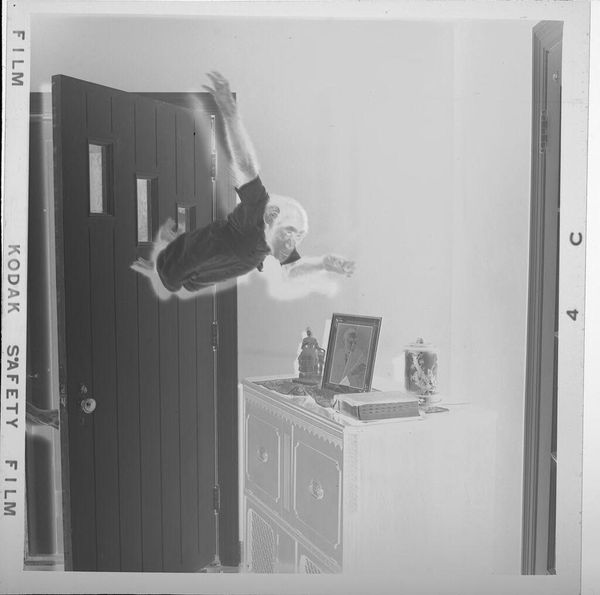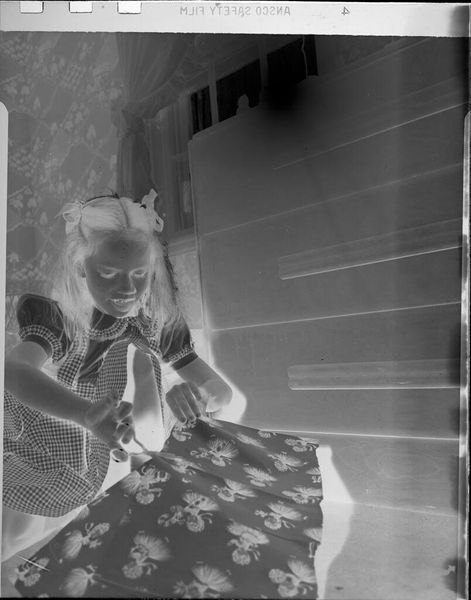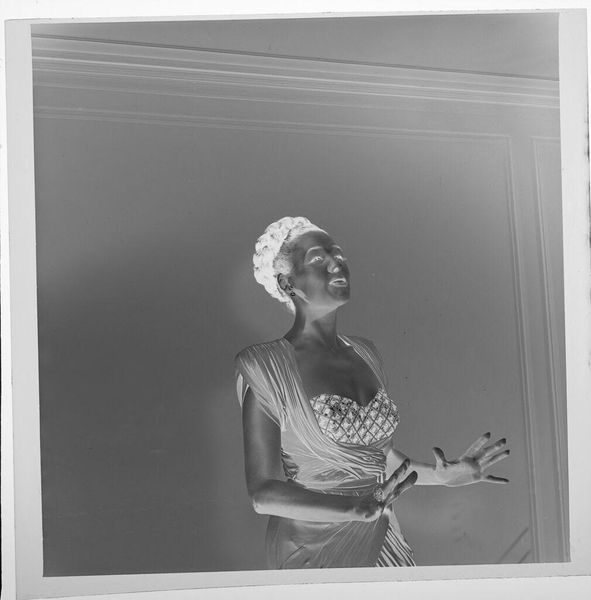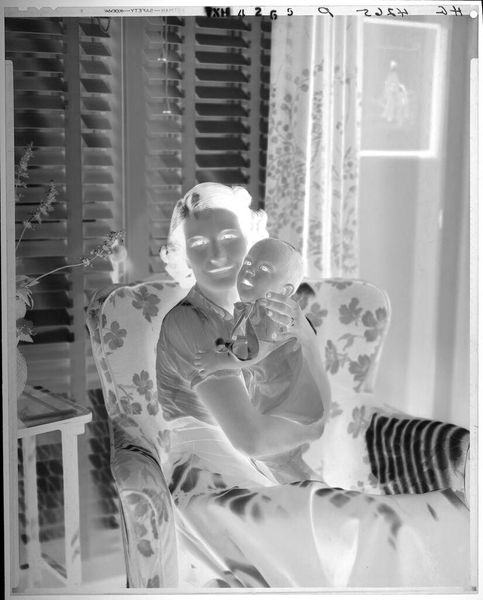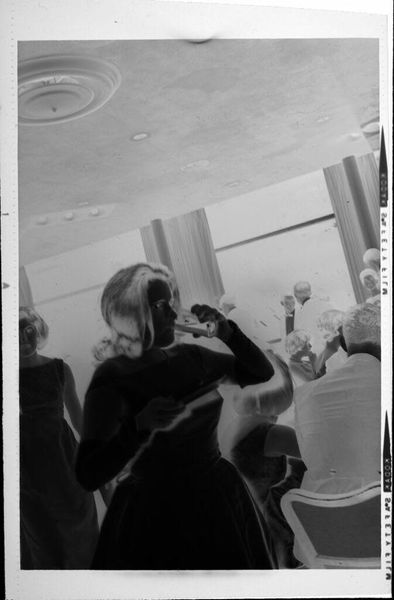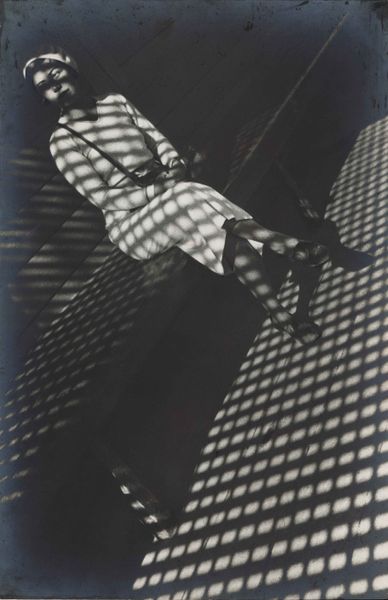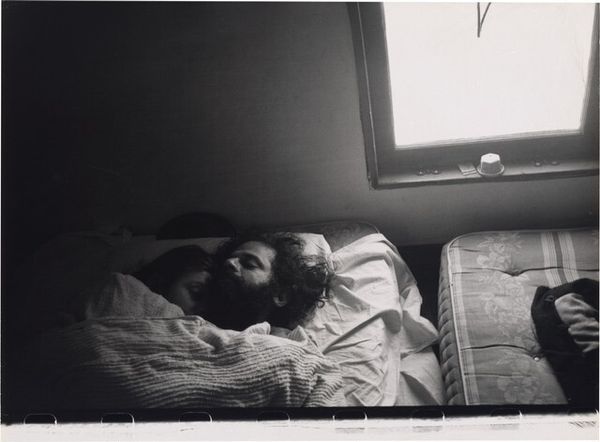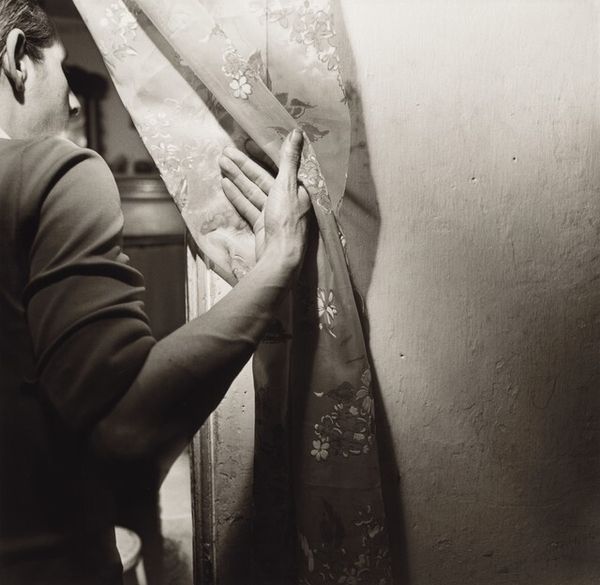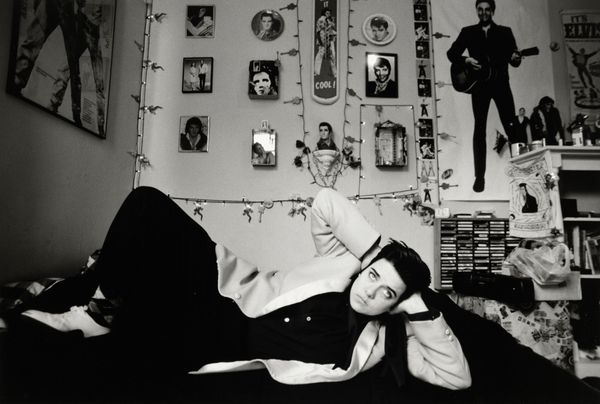
photography, gelatin-silver-print
#
black and white photography
#
photography
#
black and white
#
gelatin-silver-print
#
monochrome photography
#
monochrome
#
realism
#
monochrome
Dimensions: sheet: 27.8 × 35.3 cm (10 15/16 × 13 7/8 in.) image: 24.7 × 32.2 cm (9 3/4 × 12 11/16 in.)
Copyright: National Gallery of Art: CC0 1.0
Curator: Jim Goldberg's black and white photograph, possibly taken between 1990 and 1994, is called "Good Friday." What springs to mind when you see it? Editor: Immediately, there’s a feeling of enclosed space, a sense of waiting. The light is muted, and the composition, with the woman framed in the window, seems almost staged, like a Hopper painting but grittier. Curator: It does evoke a certain stillness, doesn't it? Goldberg, I think, really captures the raw vulnerability of his subjects. Knowing his work, I see how his gelatin silver prints explore often overlooked corners of society. The material is integral to this aim because silver is a key resource extracted for mass consumption. Editor: Yes, and look how the light interacts with the gelatin silver—the way it bounces and catches certain angles almost adds another layer to the reality. The stark contrasts accentuate the harshness, but also a peculiar beauty in what some might call a broken or rough reality. But for all this technical detail I sense an interesting social contrast--an intimacy amid what appears to be urban decay. Curator: Exactly. You can almost feel the rough texture of the windowsill against her skin. Speaking of reality, I'm wondering what thoughts the image evokes. Is she waiting, reflecting, or just caught in a moment of quiet solitude? It’s less about photographic purity than it is a window into an unseen world, isn't it? Editor: The photograph invites inquiry beyond merely admiring photographic skill and technique. Who is this woman, where is she and how is she connected to this windowsill she sits on? I can’t help but wonder what kind of labour created the garments, window, and eventually print on photographic paper before me...The labour chain to create such work. What meaning does her individual pose carry here? Curator: Maybe "Good Friday" serves as a metaphor itself. Is the window an escape? I think Goldberg shows the gritty side of that hope that we're constantly reaching for, a theme often running in his work, particularly with his concern with memory. Editor: Well, in any case, I think that as viewers we're complicit, implicated, perhaps even implicated by material things; a mirror to our desires and the unseen labor sustaining our comfort. Thanks to this work and your explanation of Goldberg’s thought processes, I can carry a new sense of responsibility for what I am, and the price I paid to exist.
Comments
No comments
Be the first to comment and join the conversation on the ultimate creative platform.
